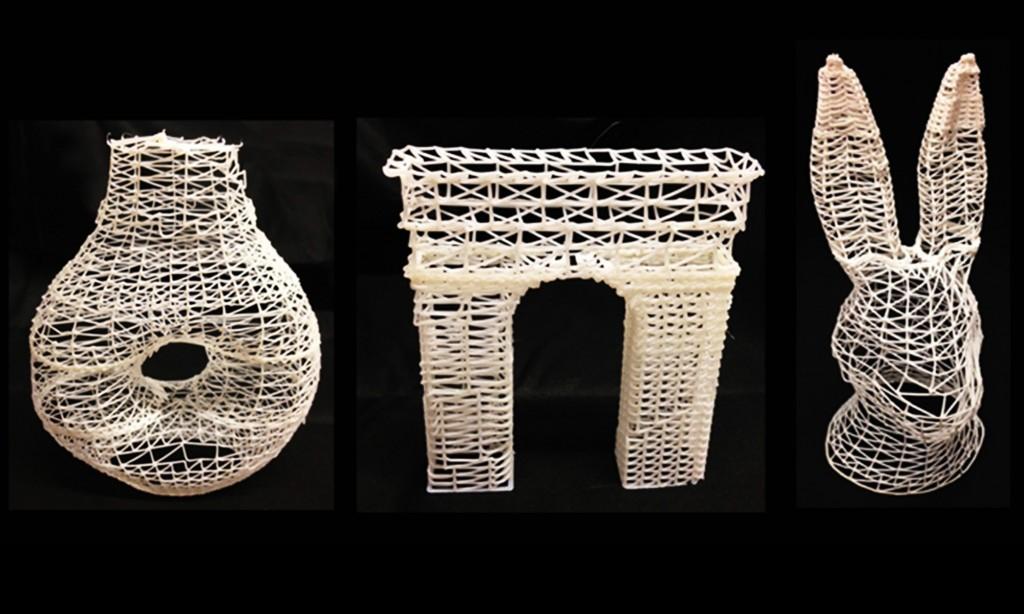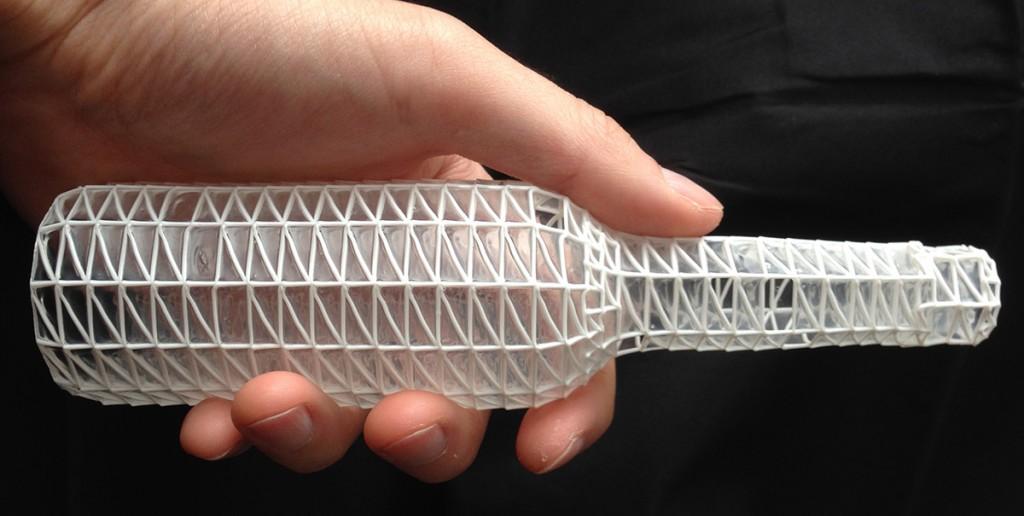One of today’s common mottos is to ‘work smarter–not harder.” WirePrint is operating on this premise fully, offering 3D printing enthusiasts a way to be much more efficient and produce a more well-rounded, well-tested product before they are ready to unveil a true prototype or product.
There’s always room for more innovation and more efficiency in the creative and manufacturing process. With Wireprint’s software, we can take more time in the dress rehearsal department and have a better “show” in the end. With the luxury of being able to experience more trial and error along the way, the end product is sure to benefit—as are consumers of what is being designed and made.
With many prototypes, 3D printing can take a full day, and produces a solid, filled in, three dimensional piece of work. In what seems like such a common sense (why didn’t we think of that before?) but genius move, WirePrint realized that it’s much faster and often more practical just to make a wire prototype that is hollow inside, reducing printing time significantly. The idea is more to build up, or out—rather than filling in.
The term “low-fidelity wireframe previews” pretty much sums it up. This is a fast way to make early, properly sized prototypes without wasting time and unnecessary materials, while allowing the designer to check the primary aspects of the prototype, as well as verifying ergonomic fit. As we all know, the drafting process is a very important part of the creative, inventing process. If users are able to make a quick preliminary prototype fast and inexpensively, and check it out, lots of time is saved
Users can print up to ten times faster, and it can be done on traditional, available 3D printers. Wireprint has created their own software, which instructs the printer to extrude the filament directly into 3D space, forming the hollow wire piece, rather than using the lengthy layer-by-layer approach for something that might just be considered a rough draft, with the creator going right back to the drawing board for another try. With the wire printing approach, the user can print exponentially faster on a traditional printer, with less time and filament.
Wireframe converts the designed object into a 3D “preview” by:
- Slicing the 3D model along its vertical axis into horizontal slices
- Extracting the contours
- Filling the space between slices with a zigzag pattern
If the product needs a more solid exterior, it can be dipped in glue, which is easy, inexpensive, and renders the product more hearty. Mesh can also be incorporated into the prototype, should the user need to include a logo or something similar on the 3D-printed surface.
The WirePrint prototyping software was created by German PHD student Stefanie Mueller and developed as a whole with the Hasso Plattner Insitute and Cornell University, with a wide variety of invaluable help also contributed by students, Sangha Im, Serafima Gurevich, Alexander Teibrich and Lisa Pfisterer.
Is this something you would find helpful in the 3D-printing process? Share your thoughts with us in the WirePrint forum thread at 3DPB.com. More details on the printing process can be found in the video provide below. Special thanks to Patrick Baudisch (Hasso Plattner Institute) and Francois Guimbretière (Cornell University) for their advising role in the WirePrint software.
Subscribe to Our Email Newsletter
Stay up-to-date on all the latest news from the 3D printing industry and receive information and offers from third party vendors.
You May Also Like
US Army Corps of Engineers Taps Lincoln Electric & Eaton for Largest 3D Printed US Civil Works Part
The Soo Locks sit on the US-Canadian border, enabling maritime travel between Lake Superior and Lake Huron, from which ships can reach the rest of the Great Lakes. Crafts carrying...
Construction 3D Printing CEO Reflects on Being Female in Construction
Natalie Wadley, CEO of ChangeMaker3D, could hear the words of her daughter sitting next to her resounding in her head. “Mum, MUM, you’ve won!” Wadley had just won the prestigious...
Blue Laser-powered M600 3D Printer Launched by Meltio
Founded in 2019 as a joint venture between Additec and Sicnova, metal 3D printer OEM Meltio develops and manufactures high-performance and easy-to-use metal 3D printing solutions that use its patented wire-laser metal...
3D Printed Storage Tanks Cut Material Costs by 25%
In a previous article, “Concrete Dreams: Let’s Print Money, Not Houses,” we discussed how the spotlight on 3D printing homes might be misplaced. Bollards, pedestrian bridges, and concrete tanks could...

































